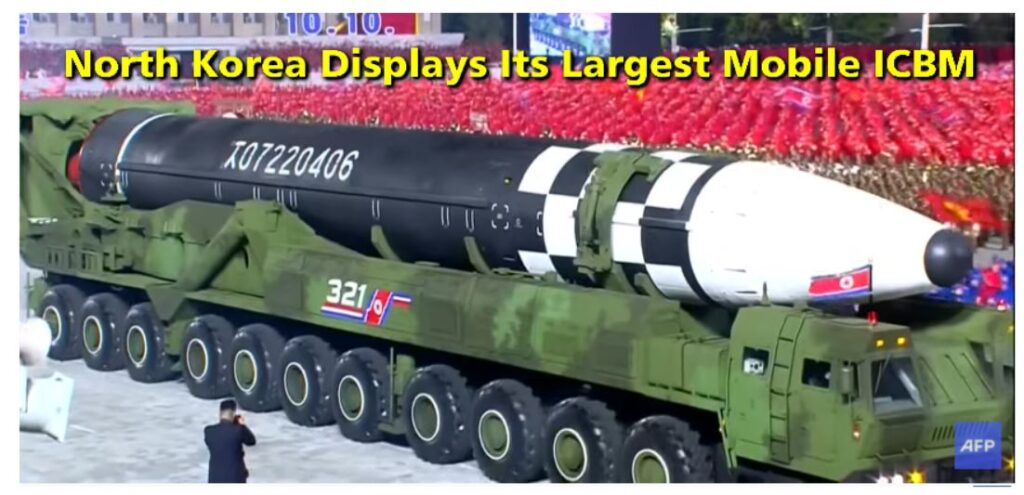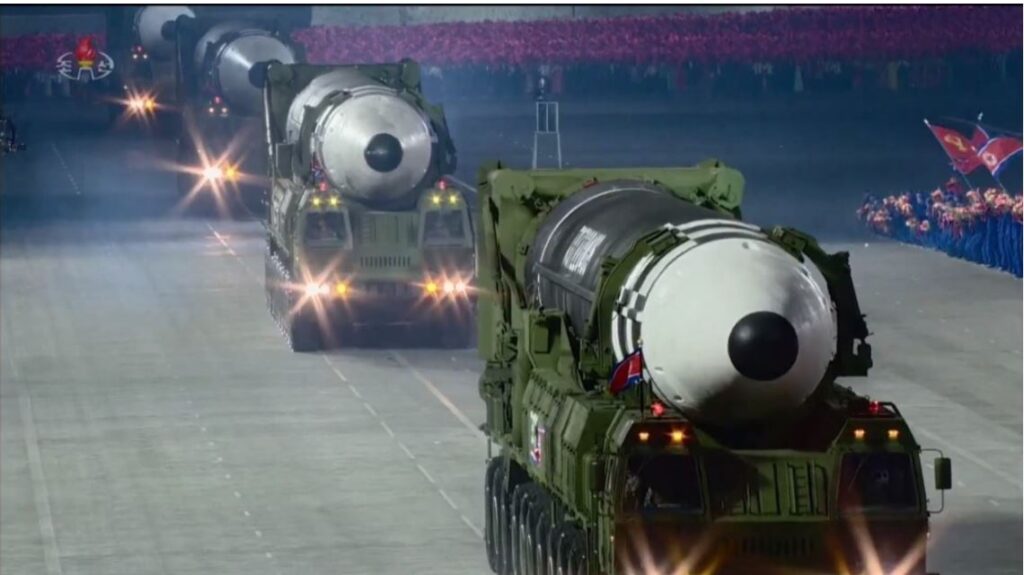
On 10 October 2020 North Korea unveiled a massive new intercontinental ballistic missile Saturday at a parade commemorating the 75th anniversary of the founding of the Workers’ Party of Korea, a signal to Washington that the regime is committed to advancing its long-range strike capabilities despite years of on-again, off-again diplomatic outreach with the United States.
The new missile, which capped the early-morning military parade, is believed to be one of the largest liquid-fueled, truck-carried ICBMs in the world, potentially with the ability to carry multiple nuclear warheads as far as the continental United States.
North Korea Military Parade 2020 video
North Korea shows off giant missiles at huge military parade | AFP video
“It’s very worrisome,” said Bruce Klingner, former CIA Korea deputy chief, now at the Heritage Foundation. He noted that North Korea had also shown the ability to make more and bigger launchers for the new missiles
“And that’s a worrisome development because it would enable North Korea to deploy more ICBMs, which would give it a larger first strike or second strike retaliatory nuclear force,” he said.
This never before seen intercontinental ballistic missiles at an unprecedented predawn military parade on Saturday that showcased the country’s long-range weapons for the first time in two years.
Analysts said the missile, which was shown on a transporter vehicle with 11 axles, would be one of the largest road-mobile intercontinental ballistic missiles (ICBMs) in the world if it becomes operational.
“This missile is a monster,” said Melissa Hanham, deputy director of the Open Nuclear Network.
Also displayed were the Hwasong-15, which is the longest-range missile ever tested by North Korea, and what appeared to be a new submarine-launched ballistic missile (SLBM).
The parade featured North Korea’s ballistic missiles for the first time since Kim began meeting with international leaders, including U.S. President Donald Trump, in 2018.
“We will continue to build our national defense power and self-defensive war deterrence,” Kim said, but vowed that the country’s military power would not be used preemptively. He made no direct mention of the United States or the now-stalled denuclearization talks.
Experts said that the new, larger ICBM is likely designed to carry multiple independent reentry vehicles (MIRVs), allowing it to attack more targets and making interception more difficult.
The new ICBM is likely intended to dispel doubts about North Korea’s ability to strike the continental United States, and an implicit threat that they are preparing to test the larger missile, said Markus Garlauskas, a former U.S. intelligence officer for North Korea.
“If the Hwasong-15 could carry a ‘super-large’ nuclear warhead to anywhere in the U.S., then the natural question is what can this larger missile carry?,” he said.
Inter-continental ballistic missiles are the last word in power projection because they allow a country to wield massive firepower against an opponent on the other side of the planet.
The only real reason to spend the money, time and effort building them is to have the capability to fire nuclear weapons.
- Director, Non-Proliferation and Nuclear Policy at the International Institute for Strategic Studies
- If these estimates are close to reality, the missile, in principle, could deliver 2000 -3500 kg to any point on CONUS. This is more capable than Soviet R-16 or R-26 ICBMs that we’re never deployed. These systems had a first stage diameter of 2.7m, tho 2nd stage was smaller 5/n
- Ankit Panda, a nuclear weapons expert at the Carnegie Endowment for International Peace, said that while more analysis was required, the weapon was “the largest road-mobile liquid propellant ICBM anywhere, certainly.”







